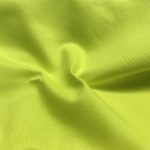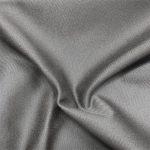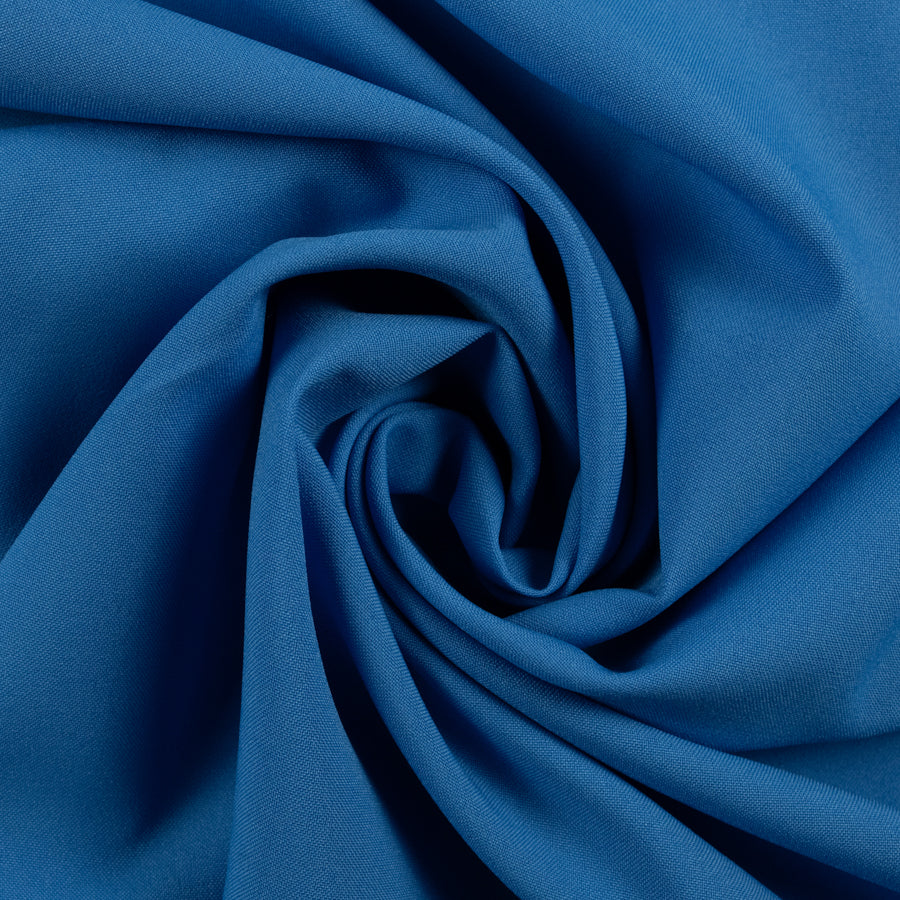What is Mechanical Stretch Fabric?
Mechanical stretch fabric refers to a type of fabric that gains its elasticity through the structure and construction of the fibers rather than the use of spandex or elastane. This is achieved by using specific weaving or knitting techniques that allow the fabric to stretch and recover without relying on elastic fibers.
How is Mechanical Stretch Fabric Made?
The production of mechanical stretch fabric involves a few key techniques:
Weaving Techniques:
- Twill Weave: Twill weave involves a pattern of diagonal ribs, which allows the fabric to have a natural give.
- Satin Weave: This weave creates a smooth surface with a natural stretch due to the floating yarns.
- Herringbone Weave: A variation of twill weave, herringbone patterns create a zigzag effect, offering flexibility.
Knitting Techniques:
- Circular Knitting: Produces a tubular fabric with inherent stretch properties.
- Warp Knitting: Uses parallel yarns, allowing for a more controlled stretch.
- Weft Knitting: Involves interlocking loops that can stretch in multiple directions.
Fiber Blends:
Using fibers like polyester, nylon, and cotton in specific combinations can enhance the stretch properties without needing elastane.
Key Materials Used in Mechanical Stretch Fabrics
- Polyester:
- Properties: Polyester fibers are strong, durable, and resistant to shrinking and stretching.
- Uses: Polyester is often used in blends to enhance the durability and stretch of the fabric.
- Nylon:
- Properties: Nylon is known for its high tensile strength, elasticity, and resistance to abrasion and chemicals.
- Uses: Nylon is commonly used in blends for workwear that requires flexibility and durability.
- Cotton:
- Properties: Cotton is breathable, comfortable, and has good moisture absorption.
- Uses: Cotton is often blended with synthetic fibers to maintain comfort while adding stretch and durability.
- Rayon:
- Properties: Rayon has a silky feel and good breathability.
- Uses: Rayon is often blended with other fibers to create a comfortable, flexible fabric suitable for various work environments.
Benefits of Mechanical Stretch Fabric
- Durability: Mechanical stretch fabrics are designed to withstand heavy use and maintain their shape over time. They are less prone to wear and tear compared to fabrics with elastane.
- Comfort: These fabrics provide a comfortable fit by allowing freedom of movement. This is particularly beneficial in workwear, where flexibility is crucial.
- Breathability: Unlike some elastic fibers, mechanical stretch fabrics maintain good breathability, making them suitable for hot and humid environments.
- Low Maintenance: Mechanical stretch fabrics are generally easier to care for. They are less likely to degrade with washing and drying compared to elastane-containing fabrics.
- Cost-Effectiveness: By eliminating the need for elastane, these fabrics can be more cost-effective to produce while still offering stretch capabilities.
Applications of Mechanical Stretch in Industrial Workwear
- Construction and Labor Workwear:
- Example: Construction workers need pants and overalls that allow them to move, climb, and bend without restriction. They also need workwear that can stand up to harsh conditions.
- Working Conditions: Construction sites where workers are moving, bending, and lifting.
- Manufacturing and Assembly Lines:
- Example: People working on assembly lines need jackets and shirts that allow them to reach and perform repetitive motions without restriction. They also need workwear that breathes and keeps them cool, so they don’t get fatigued.
- Working Conditions: Indoor manufacturing environments where people are doing repetitive tasks.
- Outdoor and Field Work:
- Example: People working in agriculture or surveying need workwear that protects them and allows them to move. Mechanical stretch fabrics give them the mobility and durability they need to handle rough terrain.
- Working Conditions: Outdoor work where people need durability and comfort in different weather conditions.
- Emergency Services:
- Example: Firefighters and rescue workers need workwear that doesn’t restrict them when they’re trying to save lives. They need to be able to move and perform critical tasks without their clothing getting in the way.
- Working Conditions: Emergency response situations where people need flexibility and durability.
How Does Mechanical Stretch Compare to Traditional Stretch Fabrics?
- Elasticity: Traditional stretch fabrics use elastane fibers to achieve their stretch, which can give them a higher stretch percentage. Mechanical stretch fabrics get their stretch from the weave or knit, so they may have less stretch, but it’s still enough for many applications.
- Longevity: Fabrics with elastane can lose their stretch over time, especially with frequent washing. Mechanical stretch fabrics maintain their properties longer, so they’re great for workwear that gets a lot of use.
- Comfort and Fit: Both types of fabrics offer comfort and a better fit. Mechanical stretch fabrics often breathe better and are less likely to make you overheat.
- Environmental Impact: Mechanical stretch fabrics can be more environmentally friendly because they don’t use synthetic elastic fibers. These fibers are often made from non-renewable resources and can be difficult to recycle.
Case Study: Mechanical Stretch Fabric in Workwear
Case Study: Construction Workwear
A construction company switched from traditional stretch workwear to mechanical stretch fabrics. They found that the new fabric was flexible enough for their workers and that their workers appreciated the added comfort and breathability. Over the course of a year, they noticed a reduction in the number of uniforms they had to replace. They attributed this to the fabric being more durable. The workers loved the fabric because it held up to the tough conditions on construction sites and remained comfortable.
Case Study: Manufacturing Plant
In a manufacturing plant, the workers complained about the stretch workwear they had to wear. The uniforms had a high percentage of elastane, which made them restrictive. When they switched to mechanical stretch fabrics, the workers were much happier. They could move better, and the uniforms didn’t get damaged as easily when they were washed. The company noticed an improvement in productivity because the workers were more comfortable and less restricted.
Conclusion
Mechanical stretch fabric is a great advancement in textile technology. It offers durability, comfort, and flexibility without the need for elastane fibers. When you use it in industrial workwear, you can be sure that your workers will be able to do their jobs well and stay safe. At Hubei Jiezhixin Textiles, we offer high-quality, durable fabrics for industrial workwear. Our mechanical stretch fabrics are designed to be strong, flexible, and comfortable. They’re perfect for your workforce. Contact us today to learn more about our fabrics.

 100% COTTON FABRIC
100% COTTON FABRIC COTTON STRETCH FABRIC
COTTON STRETCH FABRIC POLYESTER/COTTON FABRIC
POLYESTER/COTTON FABRIC OTHERS FABRIC
OTHERS FABRIC